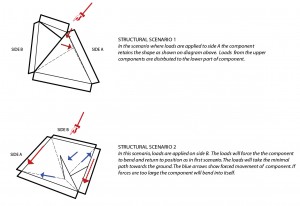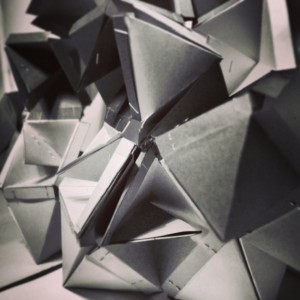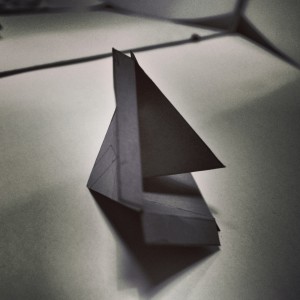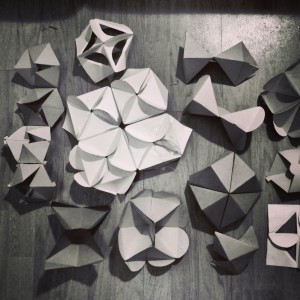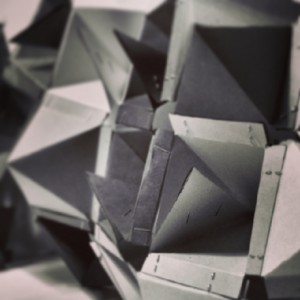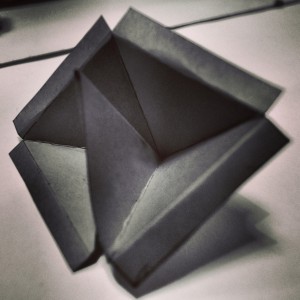We found interesting the idea of taking paper or cardboard and increase its structural performance simply by folding the material. All experimental forms we built were all constructed by folding a single piece of paper. The inspiration of Origami and paper folding structures of Ren Resch led us to explore the structural capabilities of cardboard. We made different bending experiments with several patterns in cardboard and paper to understand the different opportunities and limits with triangular pasterns and also bending arches.
The component we are working was designed to form a larger structure through addition of the same repeated components and is a collapsible component which can have multiple structural behaviours.
The folds remove the problems of bending moments in the structure, and create a self bracing component and rather than force the cardboard to bend, the forces are redirected to the ground through the shortest path. As shown on the diagrams, due to the orientation of the fold, the component is stronger when a compressive force is applied through side A. The forces flow from upper part of component to lower part. If compressive force is applied to the other side, the loads will force the the component to bend and return to position as in first scenario. If forces are too large the component will bend in itself.
The design of component allows for multiple variations of structures. The next step to be taken with component would be to turn it into a spacial truss pipe system with members of varying thickness according to the load distribution along the members. It would be interesting to see on Karamba how are the forces being transferred to the ground and adapt and change and optimise thickness ofthe members of the triangulations accordingly .




